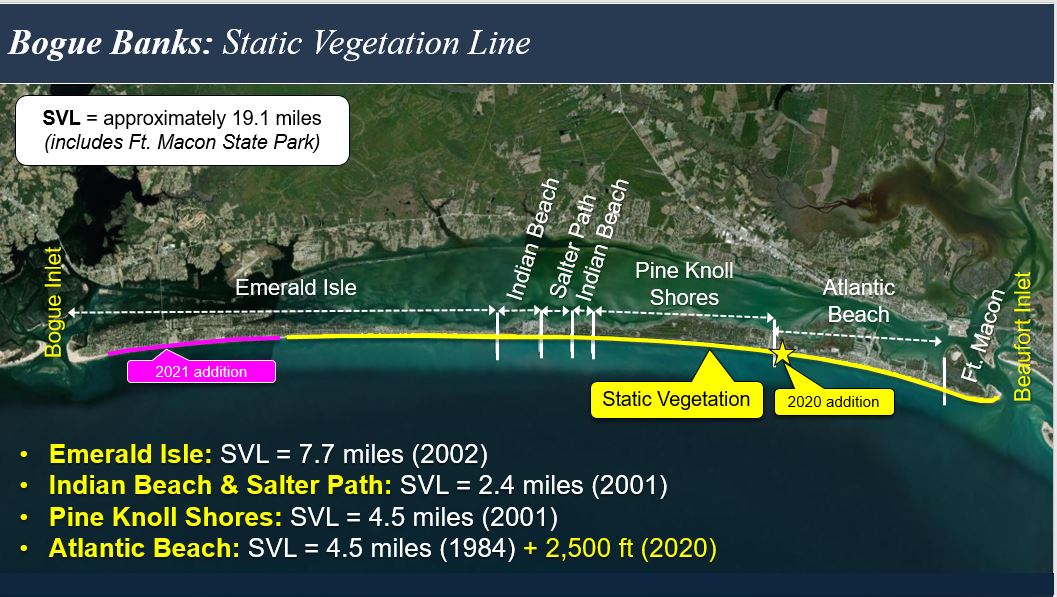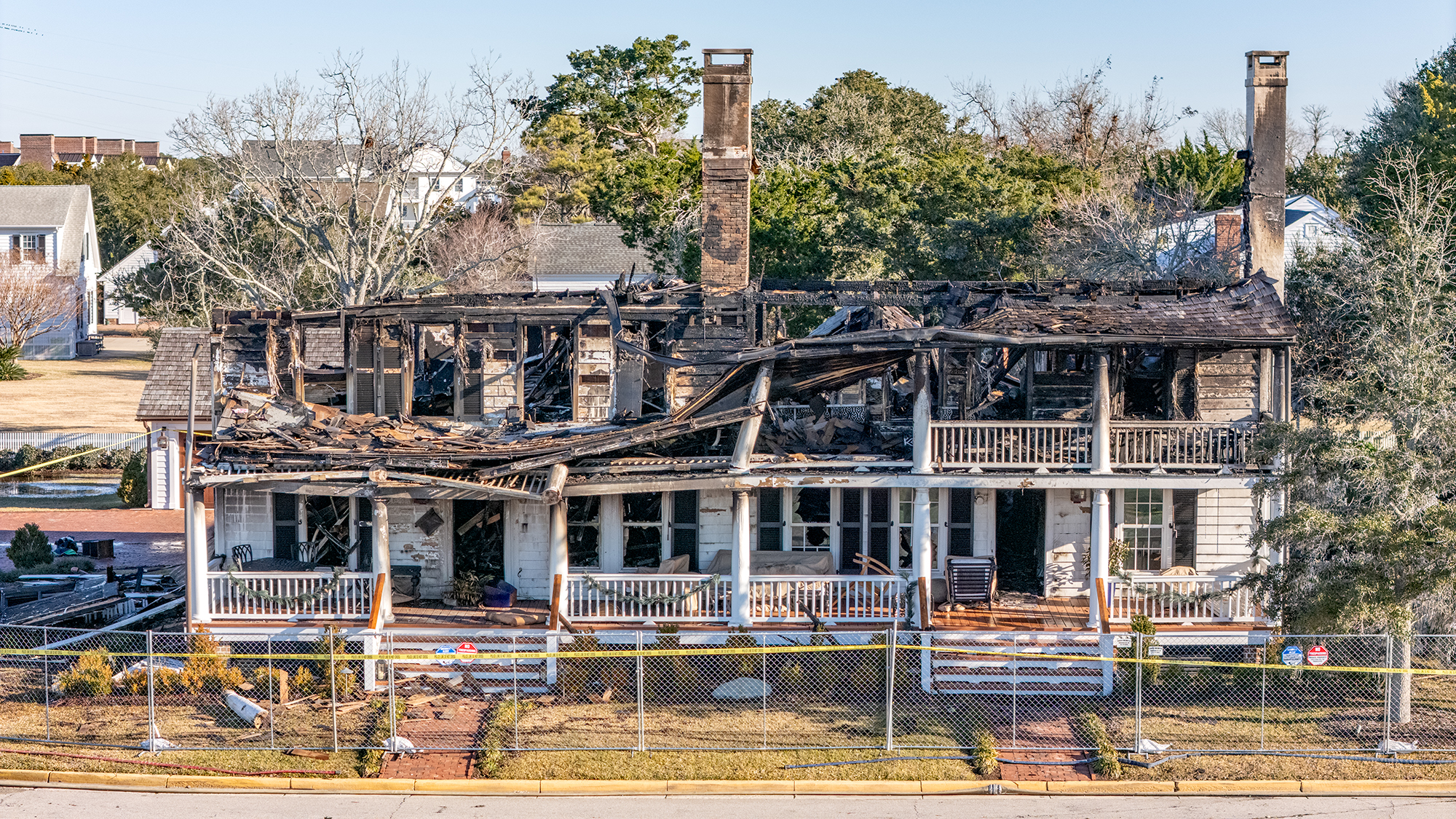
The Coastal Resources Commission last week unanimously approved the reauthorization of the static vegetation line exception for Bogue Banks communities for another five years.
The CRC approved in four separate motions the reauthorization of the static vegetation line exception for Atlantic Beach, Pine Knoll Shores, Indian Beach and Emerald Isle during its meeting Wednesday, which was held by web conference.
Supporter Spotlight
A vegetation line is the first line of stable and natural vegetation on the oceanfront before a large-scale beach nourishment project, defined as any project placing 300,000 cubic yards or more, or an Army Corps of Engineers Storm Protection project. Where these projects take place, oceanfront construction or development setbacks have to be measured from the static vegetation line, unless the community has the approved static vegetation line exception, according to Division of Coastal Management.
The pre-project vegetation line, or the static vegetation line, is used as reference that the oceanfront setbacks are measured from, Ken Richardson, shoreline management specialist for the Division of Coastal Management, explained to the commission.
“The idea is that with regular beach nourishment and reduced storm frequency, that the vegetation could potentially grow oceanward, which is a good thing, however, if for some reason regular maintenance is not possible, or if storm frequency and intensity increases, that nourished beach will erode back to pre-project conditions,” Richardson said.
The CRC developed and adopted the exception rules in 2009 to offer relief from regulations to communities regularly maintaining their first large-scale renourishment projects with a commitment to continue to do so, he explained.
With a CRC-approved static line exception, setbacks can be measured from the actual vegetation line, and not the more-restrictive static line, and structures that are greater than 10,000 square feet only have to meet a minimum setback of 120 feet, or 60 times erosion rate.
Supporter Spotlight
For a town to receive an exception, it must submit a request with a 30-year plan to maintain the initial beach renourishment projects, “essentially demonstrating that the town is committed to its efforts of slowing or managing beach erosion and to serve as a check in, the town must request a reauthorization from the commission once every five years,” Richardson said.
Richardson detailed the history of each community’s renourishment efforts for the board.
Emerald Isle installed its initial project in 2003, and has performed four maintenance projects, mostly in response to storm-related erosion.
The Indian Beach and Salter Path initial project was in 2001-02, and the town has performed three maintenance projects.
Pine Knoll Shores’ initial project was also in 2001-02, and the town has since performed four maintenance projects.
Atlantic Beach and Fort Macon, in comparison, are different because of the proximity to Beaufort Inlet and the North Carolina Port of Morehead City. From 1978 until 2020, sediment used for renourishment came from Morehead City federal navigation project sites.
Recently, sediment has been pumped directly onto Atlantic Beach and Fort Macon Beach, but historically, sediment associated with federal project was first placed in one of two offshore dredged material disposal sites or the Brandt Island upland disposal site.
Board member, Atlantic Beach Mayor Trace Cooper, recused himself from the vote regarding Atlantic Beach.







